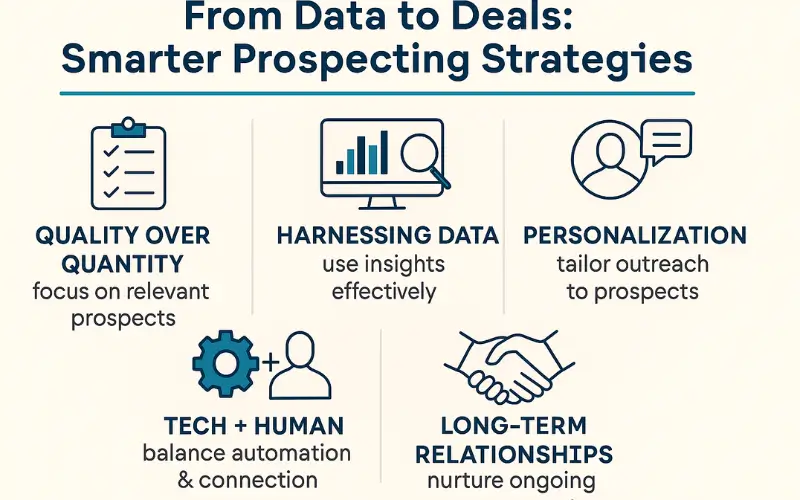Businesses now find and encounter potential customers in a completely new way. Data, tools, and well-thought-out strategies are now influencing what used to be shaped by cold calls, directories, and gut instinct. However, it is not that smarter prospecting is just a matter of possessing more information; it is only a matter of using it wisely. Insight plus intention enable businesses to build more robust pipelines that result in not only conversations, but also deals that matter.
The Movement towards Quality
During the older days, sales teams were measured in terms of contacts made within a certain week. It was straightforward: the more calls made, the more possibilities to make a conversion. That could work at times, but in most cases, both the sellers and the prospects were exhausted. Now it is about quality interactions and not quantity. The contemporary approach to strategies focuses on the knowledge of a potential customer, what is important to them, and how a solution could fit into their needs. Rather than using a wide net, effective teams understand how to fish in the correct waters. This change not only saves wasted effort. It opens room to actual relationships.
Harnessing the Power of Data
There is too much information, but the question is how to differentiate the important information and that which is distractive.
Statistics alone do not seal deals. It needs to be structured, interpreted, and implemented accurately. Information is centralized with the help of tools like a customer relationship management system, yet it is only the intuition that matters in knowing which signals are worth following. As an example, a prospect who takes the time to read the material on a company is indicating that they are interested, whereas a prospect who just scanned a page may not be in a position to be approached. The knowledge of such subtleties enables sales teams to be timely and confident in their actions.
Personalization as a Differentiator
In a world where people are bombarded with emails and phone calls are not answered, a generic message is overlooked within a very short time. One of the most useful methods of differentiation has been personalization. And this does not imply dropping a first name into an email template- it implies a personalization of communication, where the person it is addressed to feels it is relevant and valuable to them.
Individual solutions may be various. A message that makes an allusion to a given challenge within the industry in which the prospect works illustrates insight. An attentive phone call is a phone call that is built on past interactions. Even the communication channel used, such as email, LinkedIn, or calling them directly, can make a difference depending on what the prospect wishes. Sales teams will also help to raise the chances of a meaningful response by demonstrating that something has been researched and that some care has been taken.
Technology That Enhances Human Effort
One is tempted to think that a lot of the sales process can be taken over by automation. Although technology has helped in the area of prospecting, it is more effective when applied to complement rather than to replace the interaction of man. Monotonous activities like follow-up scheduling or e-mail opening can be automated. It can even be used to prioritize leads with the help of artificial intelligence to predict the most likely leads.
But what is at the core of the process is human. Trust is the foundation of deals, and to have trust, people need to interact. Technology must not kill such conversations, but should set free more time so that you can have such conversations. When teams find the right balance, they develop a system with efficiency and empathy operating in tandem. Here, modern prospect generation is scalable and works appropriately.
Developing Long-Term Relationships
The best prospecting plans do not focus on short-term deals. Long-term relationship development also includes every contact beyond the possible sale. It is about constant communication, delivering value prior to a deal closing, and continuing to support it long after it closes.
This would turn prospects into loyal customers and ultimately into referral customers. It alters the cycle of sales as well. Businesses are building pipelines that are sustainable and consistent over time, rather than pursuing short-term wins.
Conclusion
Smart prospecting does not mean putting more names into a database or acting merely on technology. It is all about using the power of data and having empathetic interactions with humans. Data to deals: By prioritizing quality over quantity, using meaningful data to leverage it, personal communication, and balancing automation with genuine interaction, businesses can develop prospecting strategies that can really go the distance: data to deals.




